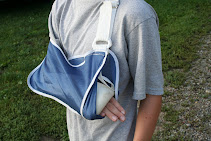An SUV collision in Long Beach Freeway injured nine people, two of whom are children.
According to the California Highway Patrol, a Ford Explorer blew out its front left tire which led its driver to overcorrect and shoot across two lanes. It crashed against a GM SUV and the impact of the collision caused the Ford to rollover three to four times.
Nine people were riding in the Ford SUV and four were ejected during the rollover because they were not properly restrained. The driver suffered major injuries while the driver of the GM SUV was uninjured.
Car rollover accidents usually occur when drivers lose control of a vehicle – it can be triggered by a tire blow out; a sudden, sharp turn; and most of the time, it happens while driving an SUV.
SUVs, as well as pick-ups are notoriously prone to rollover. Its physical differences with smaller cars and sedans such as its width, higher mass distribution and higher center of gravity can increase the chances for a rollover accident especially if drivers are careless or reckless.
SUV occupants accounted for as much as 58 percent of all people killed in crashes were in vehicles that rolled over in 2008.
Rollover accidents usually result to more fatalities than any other kind of motor vehicle accident. Many rollovers lead to partial or full ejection of occupants from the vehicle and a lot of occupants who get ejected die from serious head injuries immediately.
In 2008 alone, 9,023 passenger vehicle occupants died in crashes where their vehicle rolled over.
While it would be impossible to predict exactly when a rollover accident can happen (it can be caused by the driver’s own negligence, another party’s negligence, or even the road conditions), there is a way to prevent serious injuries or at the worst case scenario, death.
Using a seatbelt is the easiest and most effective way to reduce the risk of injury or death in a rollover. Occupants in vehicles that roll can be thrown from the vehicle if not properly restrained – as much as 66 percent of people killed in passenger vehicle rollover crashes in 2007 were unbelted.
According to the California Highway Patrol, a Ford Explorer blew out its front left tire which led its driver to overcorrect and shoot across two lanes. It crashed against a GM SUV and the impact of the collision caused the Ford to rollover three to four times.
Nine people were riding in the Ford SUV and four were ejected during the rollover because they were not properly restrained. The driver suffered major injuries while the driver of the GM SUV was uninjured.
Car rollover accidents usually occur when drivers lose control of a vehicle – it can be triggered by a tire blow out; a sudden, sharp turn; and most of the time, it happens while driving an SUV.
SUVs, as well as pick-ups are notoriously prone to rollover. Its physical differences with smaller cars and sedans such as its width, higher mass distribution and higher center of gravity can increase the chances for a rollover accident especially if drivers are careless or reckless.
SUV occupants accounted for as much as 58 percent of all people killed in crashes were in vehicles that rolled over in 2008.
Rollover accidents usually result to more fatalities than any other kind of motor vehicle accident. Many rollovers lead to partial or full ejection of occupants from the vehicle and a lot of occupants who get ejected die from serious head injuries immediately.
In 2008 alone, 9,023 passenger vehicle occupants died in crashes where their vehicle rolled over.
While it would be impossible to predict exactly when a rollover accident can happen (it can be caused by the driver’s own negligence, another party’s negligence, or even the road conditions), there is a way to prevent serious injuries or at the worst case scenario, death.
Using a seatbelt is the easiest and most effective way to reduce the risk of injury or death in a rollover. Occupants in vehicles that roll can be thrown from the vehicle if not properly restrained – as much as 66 percent of people killed in passenger vehicle rollover crashes in 2007 were unbelted.



